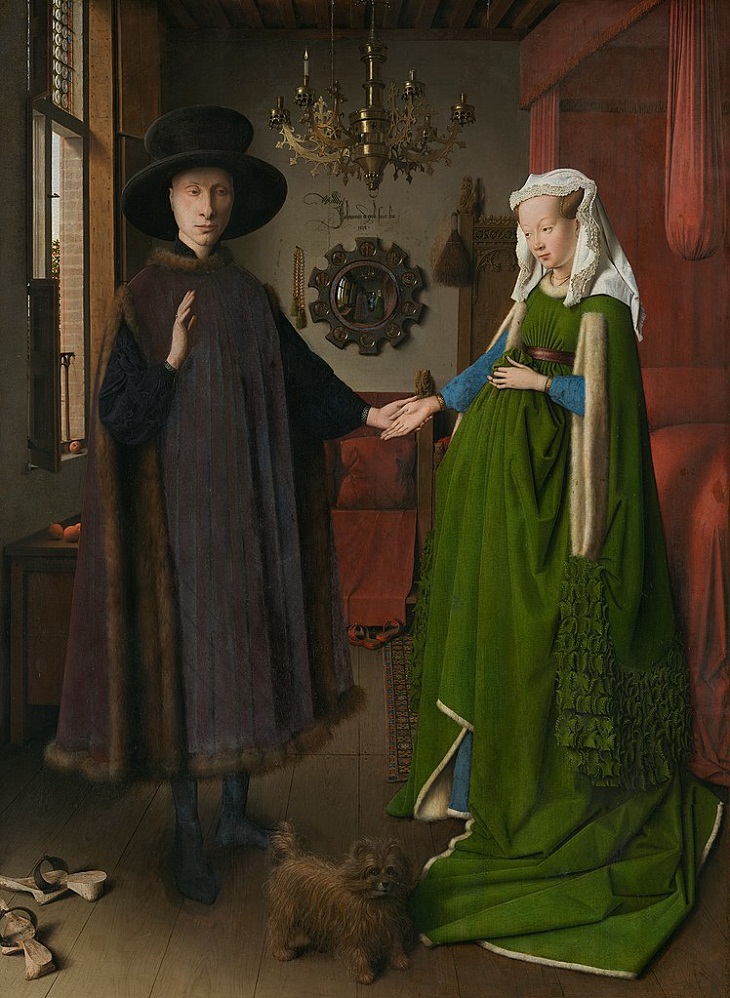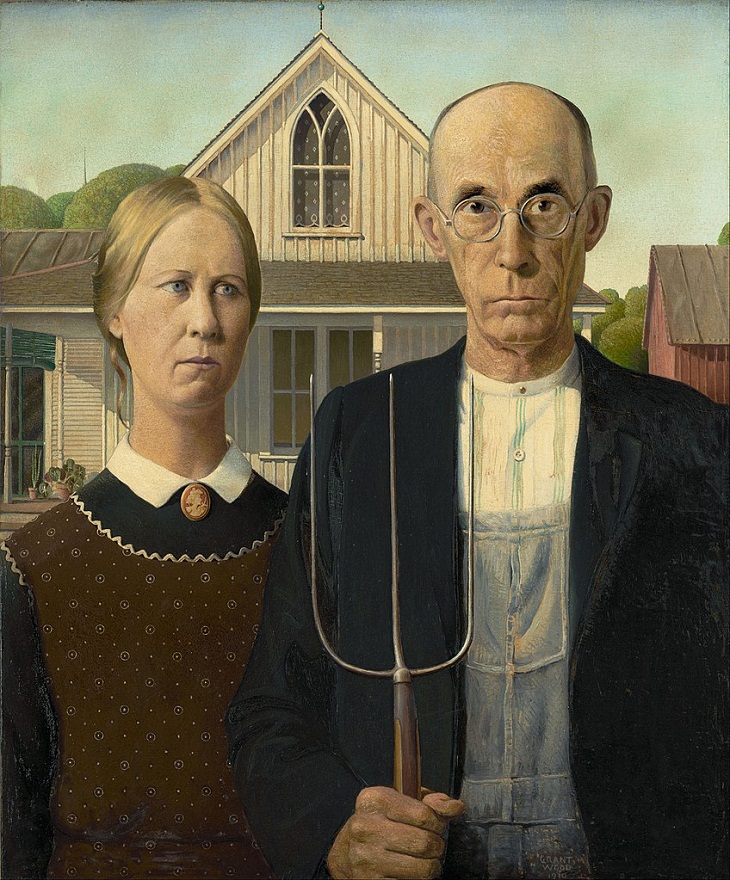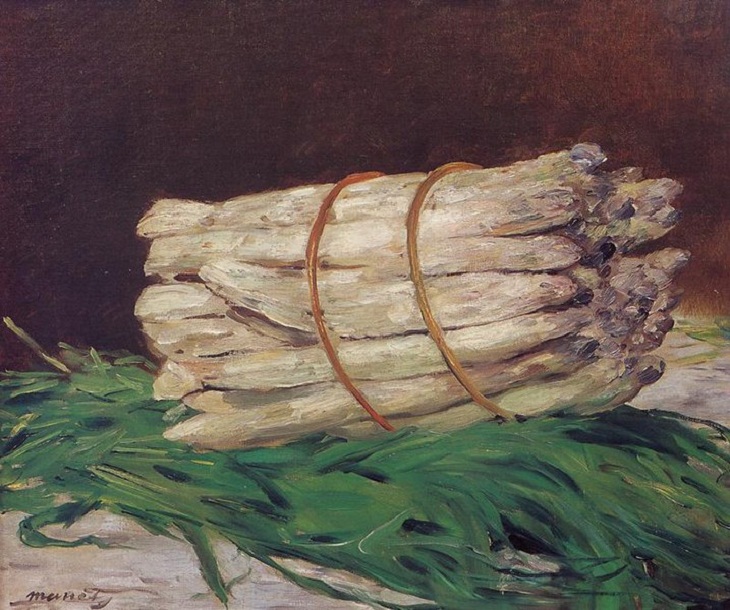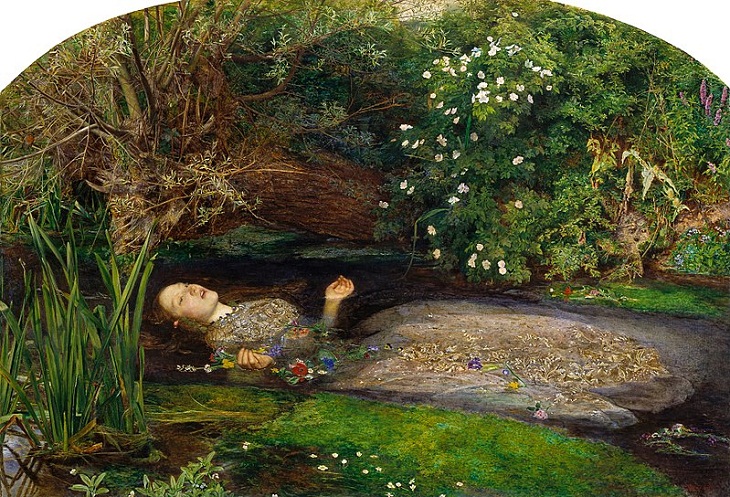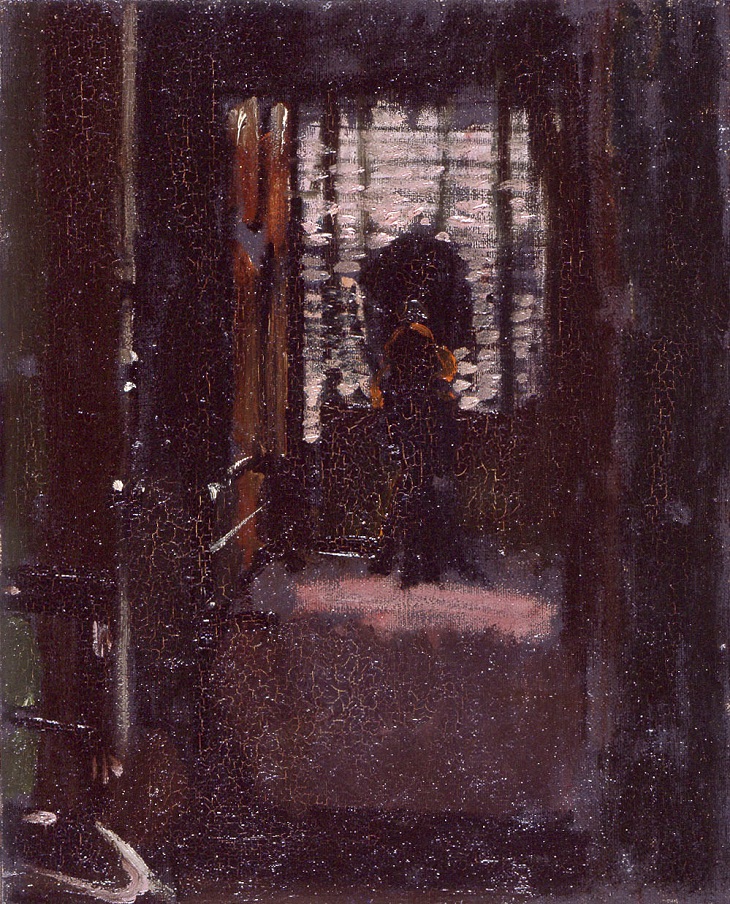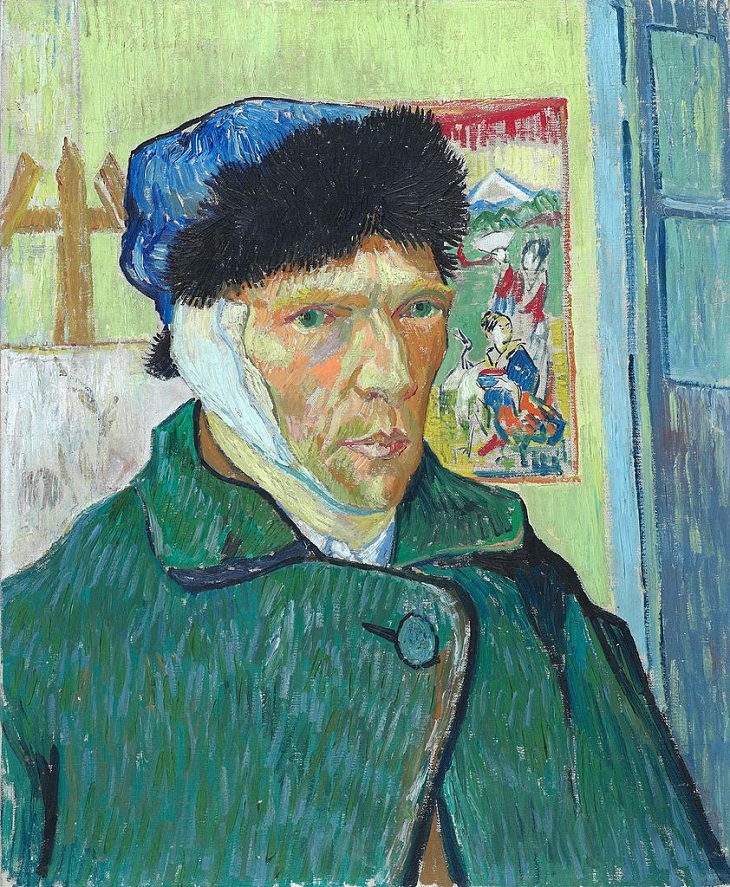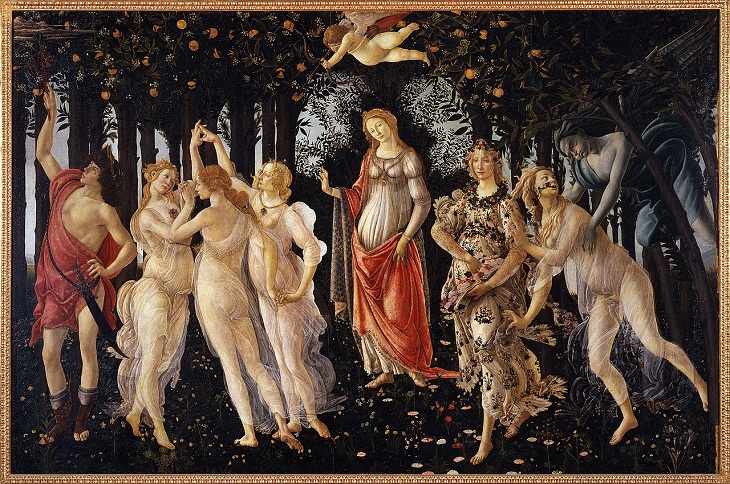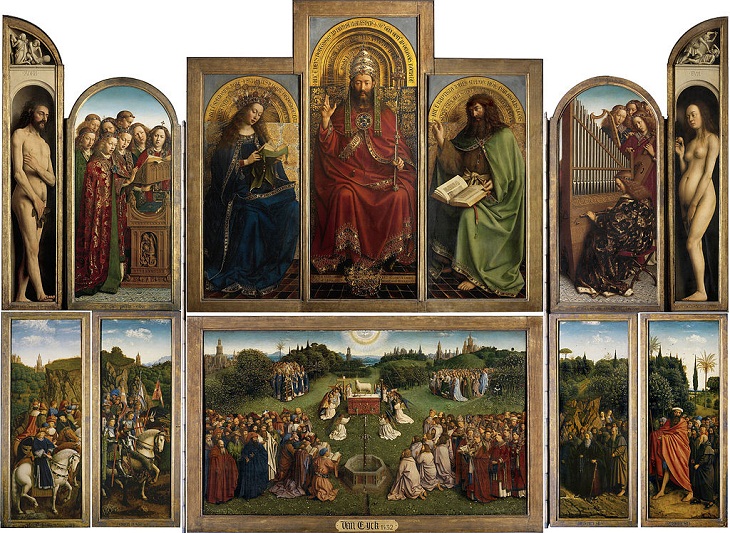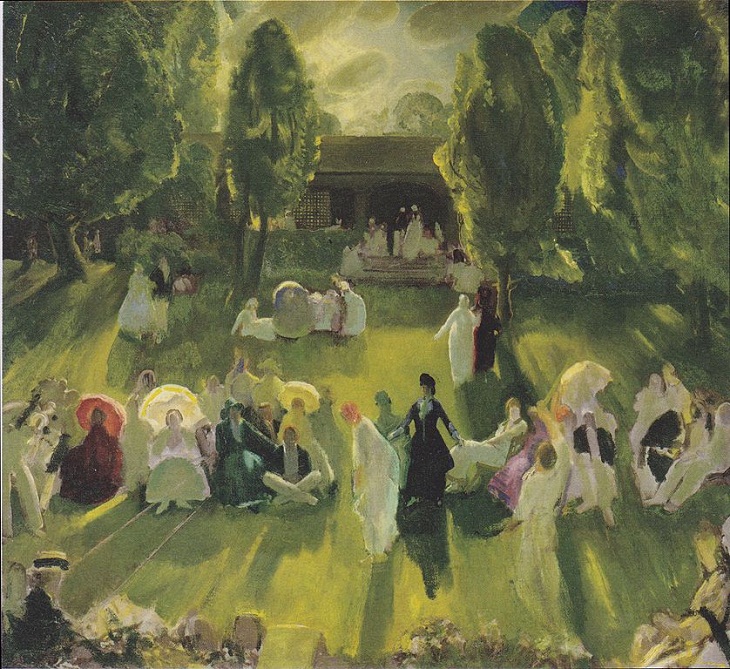This early Netherlandish panel painting by Dutch master Jan van Eyck is cloaked in symbolism. Art experts say that the elegantly dressed couple in the painting is Giovanni di Nicolao di Arnolfini and his wife, Costanza Trenta - two affluent Italians from Bruges. The painting’s unusual composition has often confused art connoisseurs.
No one is sure if the painting celebrates the couple’s wedding or another event. Questions have also been asked if the woman was pregnant or simply flaunting the latest fashion. Also, take a closer look at the mysterious figures in the convex mirror. Van Eyck’s signature has been placed directly above it. Is there a reason for it? Some believe that the curious positioning of his signature suggests that one of the figures in the mirror might be the great artist himself.
2. American Gothic
Artist: Grant Wood
Year: 1930
American artist Grant DeVolson Wood is best known for his work depicting images of the American Midwest. The painting that made him famous was American Gothic, depicting a Depression-era Iowan farmer and his stern-looking daughter standing in front of the gothic window of their wooden home. Interestingly, many still confuse the woman to be the farmer’s wife. In reality, the man posing as the farmer was Byron McKeeby, Wood’s dentist, and the woman was Nan Wood Graham, the artist’s sister.
3. A Bunch of Asparagus
Artist: Édouard Manet
Year: 1880
There is a delightful story behind this painting. Édouard Manet had sold A Bunch of Asparagus to French art critic and collector Charles Ephrussi for 800 francs, but Ephrussi sent him a thousand francs. Not willing to let go of an opportunity to display his wit, Manet created an additional painting of a single stalk of asparagus and sent it to him with a note saying: "There was one missing from your bunch." The bonus painting hangs in Paris’s Musee D’Orsay today.
4. Ophelia
Artist: Sir John Everett Millais
Year: 1851-52
John Everett Millais enjoyed painting from life whenever he got the chance. He worked on Ophelia - which represents the story of Ophelia drowning - in the open air. This, however, wasn’t exactly a pleasant experience for the artist. “My martyrdom is more trying than any I have hitherto experienced. The flies of Surrey are more muscular, and have a still greater propensity for probing human flesh,” he said about his experience of painting in the open air. Furthermore, Millais was criticized for trespassing on a field and wrecking the hay.
Interestingly, the artist’s model, Elizabeth Siddal, posed for him in a bathtub full of water in his London studio. It’s been reported that, during one sitting, the oil lamps for keeping the water warm went out, causing Siddal to fall ill. Her father then pressured Millais to pay for his daughter’s medical expenses.
5. Jack the Ripper’s Bedroom
Artist: Walter Sickert
Year: 1908
Walter Sickert was well-known for his melancholic portraits and dimly lit domestic interiors, but this particular one surprised many experts. The bedroom is believed to be of the artist’s own lodgings at 6 Mornington Crescent in London. The story goes that Sickert’s landlady had told him that she suspected the previous tenant might have been the famous murderer, Jack the Ripper. This is what inspired the artist to create this painting.
6. Self-Portrait with Bandaged Ear
Artist: Vincent van Gogh
Year: 1889
Van Gogh painted Self-Portrait with Bandaged Ear in January 1889, a week after receiving treatment in a hospital for cutting off most of his left ear. The great artist did this self-mutilation following a heated argument with a fellow painter Paul Gauguin. The two friends worked in the South of France in 1888 and planned to set up a ‘studio of the south’ to give like-minded artists a space to share ideas and work side-by-side. However, Gauguin decided to leave, and van Gogh didn’t react well to the news of his impending departure.
The painting depicts the artist in his studio with the right side of his head wrapped in cloth. The fur cap he wears is a reminder of the harsh working conditions he faced in January 1889.
7. Primavera
Artist: Sandro Botticelli
Year: 1477–1482
Sandro Botticelli’s Primavera is widely celebrated as the most popular artistic representation of the spring season. This early Renaissance masterpiece shows the transformation of the nymph Chloris into Flora, the goddess of spring, in a grove. While the work’s precise meaning continues to be debated, it’s generally agreed that Primavera depicts themes of love, marriage, and sensuality. It has also been suggested that the figures in the painting are modeled after the members of the House of Medici, a powerful Italian banking family and political dynasty that ruled Florence. One member of the clan had commissioned this painting.
8. The Ghent Altarpiece
Artist: Hubert and Jan van Eyck
Year: c. 1432
The Ghent Altarpiece is probably one of the most ambitious and influential paintings of all time. Also called Adoration of the Mystic Lamb, the painting was created by brothers Hubert and Jan van Eyck for St. Bavo’s Cathedral in Ghent, Belgium. Its richly detailed panels display a variety of scenes - the Annunciation, Adam and Eve, the Virgin Mary, John the Baptist, and a crowned Christ. Experts say that this was the first great oil painting and influenced oil painting for centuries to come.
Composed of 12 panels, this monumental work requires study from many different angles, and its rich complexity fascinates people even today.
The altarpiece was also in the news for the wrong reasons. Protestant militants broke down the cathedral and intended to burn it down. Parts of it were stolen at different times. In 1934, the lower left panel was stolen and never recovered. A few years later, Hitler developed an interest in the painting and had it transported to Germany. Fortunately, the Ghent Altarpiece was eventually saved by brave salt miners and Allied "monuments men," whose job was to track down stolen art.
9. Tennis at Newport
Artist: George Bellows
Year: 1919
Renowned for his gritty, brawny paintings of boxing matches, Tennis at Newport was a refreshing departure for George Bellows. This charming painting depicts the annual tennis tournament in Newport, Rhode Island. Instead of sport, the painting focuses on spectators leisurely relaxing, bathed in warm sunlight.
Bellows loved sports, and his inspiration for Tennis at Newport came from hanging about Rhode Island for the summer with his family. During this time, Newport, Rhode Island, had been the home to many tennis tournaments and the favorite hangout of the wealthiest New York families. Through his painting, Bellows wanted to show the privileged world of the spectators during a tennis match.
10. Washington Crossing the Delaware
Artist: Emanuel Leutze
Year: 1851
Washington Crossing the Delaware is an iconic depiction of Washington's attack on the Hessians at Trenton on December 25, 1776. German artist Emanuel Leutze painted the first version of this subject in 1849, but it was damaged in his studio by fire in 1850. This version was started by the artist in 1850 and placed on exhibition in New York in October 1851. It was bought for a whopping sum of $10,000.
Leutze had spent time in the U.S. and painted this famous scene as a symbol of unity, and in the hope that it would inspire European revolutionaries. Leutze's use of the Stars and Stripes flag has caused many debates for years because it was not in use until September 1777.
Share this post with other art lovers...

